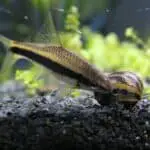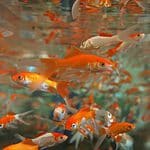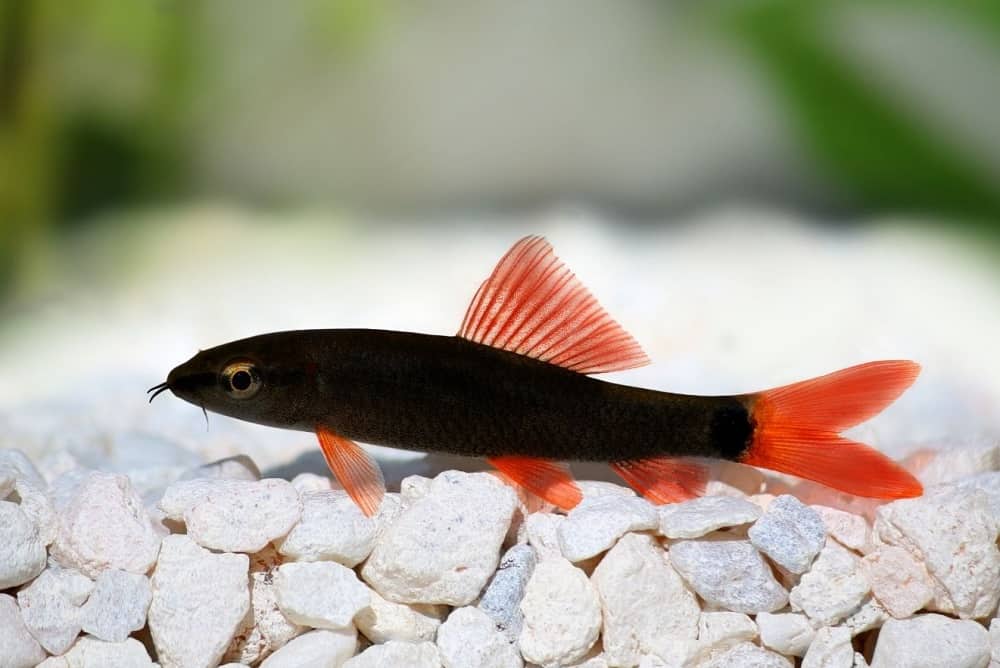If you are a new fish owner, setting up your aquarium and filling it with the perfect community fish can be exciting. But before you get too carried away, you should be on the lookout for one thing: New Tank Syndrome (NTS).
The New Tank Syndrome is nothing more than your aquarium not having what it needs to maintain excellent water quality, meaning the tank is unable to sustain aquatic life.
The good news is you can avoid this problem by taking preventive measures. And if you already have a tank exhibiting signs of NTS at the moment, there’s a solution.
Read more to find out how to prevent and combat NTS.

Getting Familiar With The New Tank Syndrome
New Tank Syndrome is a condition which manifests in aquariums due to the presence of excessive toxins and the absence of beneficial nitrifying bacteria to restore suitable water quality.
Nitrifying bacteria are essential to sustaining the cycle of nitrogen in an aquarium. These bacteria oxidize ammonium compounds produced by fish waste into less toxic nitrates.
In addition, much of the nitrifying bacteria live in the tank filter. As soon as these bacteria grow on the biofilter and on all wet surfaces of the aquarium, they begin to break down and process the present waste. Unfortunately, a newly set up aquarium does not yet have a colony of healthy nitrifying bacteria which can handle the organic load generated by the tank’s inhabitants. Therefore, any level of toxic nitrogen compounds will have a high negative impact on the environment.
So, how does NTS affects most fish? Here are examples:
New Tank Syndrome in Goldfish
Goldfish have a certain resistance to ammonia; they will survive for some time in this harsh environment. You will see some symptoms of poisoning in your fish, such as red gills, wheezing, and red spots or burns over the body.
These symptoms are direct causes of ammonia poisoning. If not treated, the fish will die.
New Tank Syndrome in Betta Fish
Betta fish are super hardy aquatic animals, but that doesn’t stop them from suffering in aquariums without filters or that haven’t been cycled. As much as they resist for a while due to the inappropriate environment, the immune system of these fish will be constantly suppressed.
Because of this constant suppression, the fish will constantly be showing diseases like Ich, Fin Rot, Mouth Rot, and Velvet Disease.
New Tank Syndrome Cloudy Water
It is normal for the aquarium water to acquire a cloudy and milky appearance during the cycling period. This occurs for two main reasons.
The most harmful cause of cloudy water is usually excess organic matter. In healthy and cycled aquariums, this organic material would be consumed by bacteria quickly without influencing the water aspects.
When this organic matter “spoils”, that is, it decomposes, it releases substances that are harmful to the health of the ecosystem, such as ammonia. These compounds cloud the water, turning it yellow or leaving it with a milky appearance.
The second cause is a disorderly explosion of beneficial bacteria in an aquarium filled with organic matter. Imagine a colony of bacteria reproducing and dying uncontrollably in an unstable way. The number of waste that these colonies produce before stabilizing is huge, and they will become visible in the water column for a while, leaving the water looking cloudy.
New Tank Syndrome Symptoms
The symptoms of a system suffering from New Tank Syndrome are the same as those experiencing an ammonia spike.
The first symptoms can be noticed in the fish. They will be apathetic, pale in appearance, and breathing heavily, with bodies with burns. They may even lie on the bottom or close to the surface and swim erratically.
Aquarium water will also show clear signs, such as acquiring a cloudy appearance, turning yellow, and emitting an unwanted aroma.
If you have a Betta Fish, remember this: they should always be kept in aquariums of at least 5 gallons and with a filtration system. Bettas living alone in unfiltered aquariums constantly feel the effects of the new tank syndrome and will perish quickly.
In addition to the symptoms seen in the water that has already been mentioned, such as a bad smell and cloudy water, in this case, the symptoms are more noticeable in the fish.
Betta fish that survive in these conditions, unless their owner performs cleaning and maintenance almost daily, always show bruises on their body, with missing fin rays, and look sad.
They get that way because they are under the constant influence of environmental stress caused by ammonia. And only in extraordinary circumstances will they reach the maximum life span of the species.
Testing Your Aquarium Water
Testing aquarium water is the main step in diagnosing and correcting New Tank Syndrome. Only by testing nitrogen compounds will we know the amount of ammonia in our tanks.
To properly cycle an aquarium, you must use these tests. This is the only way to gauge the concentration of compounds in your tank, as well as the progress of the filtration system’s efficiency. After setting up the aquarium and turning on the filter, perform ammonia tests every two days.
If you have already added fish to the system, the ideal is to remove them and temporarily place them in a cycled aquarium. If this is not possible, follow the steps described, but perform ample partial exchanges (above 60%) daily. These changes will do the work of a filtration system, renewing the water daily.
In addition, partial exchanges help to speed up the cycling period. Another tool that can be used for this purpose is biological accelerators. As much as they are not 100% effective, using them in the aquarium will accelerate the fixation of bacteria.
After a few days with the filter working, you will notice that the ammonia levels start to drop gradually. This is the action of the newly established colony of nitrifying bacteria.
Afterwards, do an ammonia test and also a nitrite test. The ammonia will probably be at the same index as before, and the nitrite will be at 0 ppm.
From then on, ammonia will be lower and lower, and nitrite and nitrate will begin to rise. When the nitrite is around 1 to 2 ppm, it is confirmation that the first cycling step is completed.
Continue taking measurements. When the nitrite reaches zero, the second step is complete. Here you can introduce some plants into the system.
For a time, the nitrite had been unstable, occasionally fluctuating. Here you will be able to measure the nitrate, which will be at high levels. Proceed with a partial water change of 50 to 80% and wait another day.
If, over the next 3 days, the nitrogen content remains close to 0, its cycling is complete. Otherwise, wait a few more days until the entire colony of bacteria is well established.
How to Combat New Tank Syndrome
One way to combat the New Tank Syndrome is by cycling your aquarium.
The best way to do this is to take out the animals and plants placed in the tank and start a cycling period. Or cycle with the inhabitants still in the aquarium.
Carrying out the cycling period with the aquarium inhabited is not advisable, as it causes suffering to the animals and plants that live there. But, if this is the only possible way, there are some ways to reduce animal suffering.
The first step you should take is to perform extensive water changes daily. These water changes will remove toxins, providing a stable, ammonia-free environment for the fish. In addition, by leaving the environment always in pristine conditions, extensive and constant exchanges help the fixation and growth of the bacterial colony.
With the advancement of technology, nowadays, we can find bottled bacteria for sale. These products are called aquarium stabilizers or biological accelerators and are often associated with ammonia removers.
These products are not miraculous, but they will help you by speeding up the cycling time. Even with these products, it is important that you remember that your system is still new and fragile. Because of this, continue carrying out tests and water changes.
Doing a Water Change Properly
An important part of having an aquarium at home is performing water changes. This step removes harmful compounds and is vital to maintaining optimal water quality.
Regardless of the size of the aquarium, the technique to be used for the water change is the same, usually done with the help of a tube connected to a hose. We call this device a siphon.
We usually drain the water from the aquarium into a bucket or straight down the drain.
To start, dip the siphon and prepare a container to collect the water;
With the siphon, remove 30% to 80% of the water that is in the tank;
Prepare make-up water. Do not forget that it must be in excellent condition, without chlorine, and in the conditions of temperature, hardness, and pH pre-established for your aquarium,
Replace the water little by little without stressing the fish.
Tips To Avoid New Tank Syndrome
Here are a few tips to avoid New Tank Syndrome and ensure a successful start for your new aquarium.
1. Carry out the process called cycling.
The best way to escape this syndrome is simply cycling your aquarium. During the process called cycling, through nitrifying bacteria, your filter will become efficient and will be able to keep the water always clean and stable.
Be patient with time for your aquarium to cycle properly.
2. Perform constant tests in the aquarium.
You will only know what is going on in your aquarium water through constant testing. Constantly monitor ammonia, nitrate, and nitrite levels. When all these parameters are locked at 0 for a period, your tank is ready to receive the first inhabitants.
3. Populate your aquarium little by little.
As much as your tank is cycled, the bacteria are used in an environment without large animals; the bacteria deal with a low amount of ammonia and organic matter.
When inserting many fish or plants at once, bacteria may not be able to handle all the excrement generated, causing bacterial booms that make the water cloudy or ammonia spikes.
4. Use cycling accelerators.
These products are easily found in speciality stores and have affordable prices. They are great adjuncts for accelerating cycling.
5. Cycle without fish.
Give preference to cycling your tank when you still don’t have fish.
Cycling without fish occurs faster, in addition to not subjecting aquatic animals to unnecessary stress and suffering.
New Tank Syndrome FAQS
What causes new tank syndrome?
The lack of a healthy colony of nitrifying bacteria in newly set-up aquariums causes this syndrome. Tanks assembled and filled with water for the first time do not have enough beneficial bacteria to convert ammonia to nitrate. When adding fish or other animals to an environment like this, ammonia will build up until the fish simply die.
How long does new tank syndrome last?
The time it takes for the syndrome to end is the time it takes to cycle the tank. Quoting a correct time is very difficult since each aquarium’s cycling process occurs in a specific way.
In general, the cycling process is a little longer for aquariums already with fish than for empty ones. But the average is 30 to 60 days. In aquariums without fish, cycling can occur for 7 days.
There is only one way to know when cycling is over — testing your aquarium water. Perform daily ammonia tests. When this compound is consistently at 0 for a few days in a row, it indicates that your aquarium already has a healthy colony of bacteria and can begin to populate.
Can new tank syndrome kill fish?
As mentioned, NTS is caused by an imbalance of ammonia and nitrite levels in the water that hasn’t had enough time to cycle properly. It can occur when too many fish are added into a newly set tank before necessary bacteria have a chance to build up in the system. If left untreated, NTS can cause serious damage to your fish’s gills and fins, leading to an agonizing death.
References
Chong, R. S. M. (2022). Nitrite–nitrate toxicosis. In Aquaculture Pathophysiology (pp. 779-782). Academic Press.
Hor, K. W., Salleh, S. M., Ezree, M., Zaman, I., Hatta, M. H., Ahmad, S., … & Mahmud, W. A. W. (2017, October). Technology Model of Aquaculture Production System. In Journal of Physics: Conference Series (Vol. 914, No. 1, p. 012040). IOP Publishing.
Masser, M. P., Rakocy, J., & Losordo, T. M. (1999). Recirculating aquaculture tank production systems. Management of recirculating systems. SRAC Publication, 452.
Nirmala, K., & Rusmana, I. The Use of Ammonium chloride and Sodium nitrite to avoid new tank syndrome effect.
Pullium, J. K., Dillehay, D. L., & Webb, A. (1999). High mortality in zebrafish (Danio rerio). Journal of the American Association for Laboratory Animal Science, 38(3), 80-83.
Tank, R. A. (1999). Recirculating Aquaculture Tank Production Systems.








